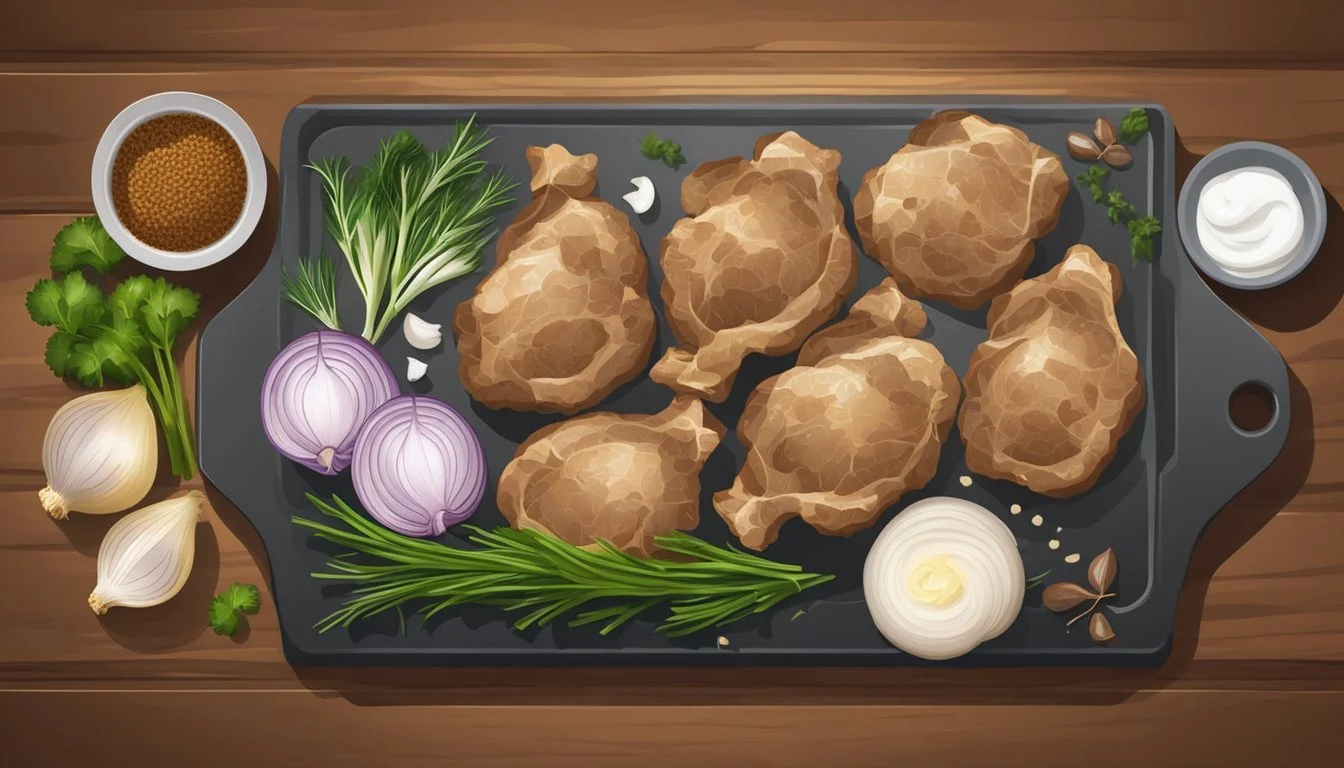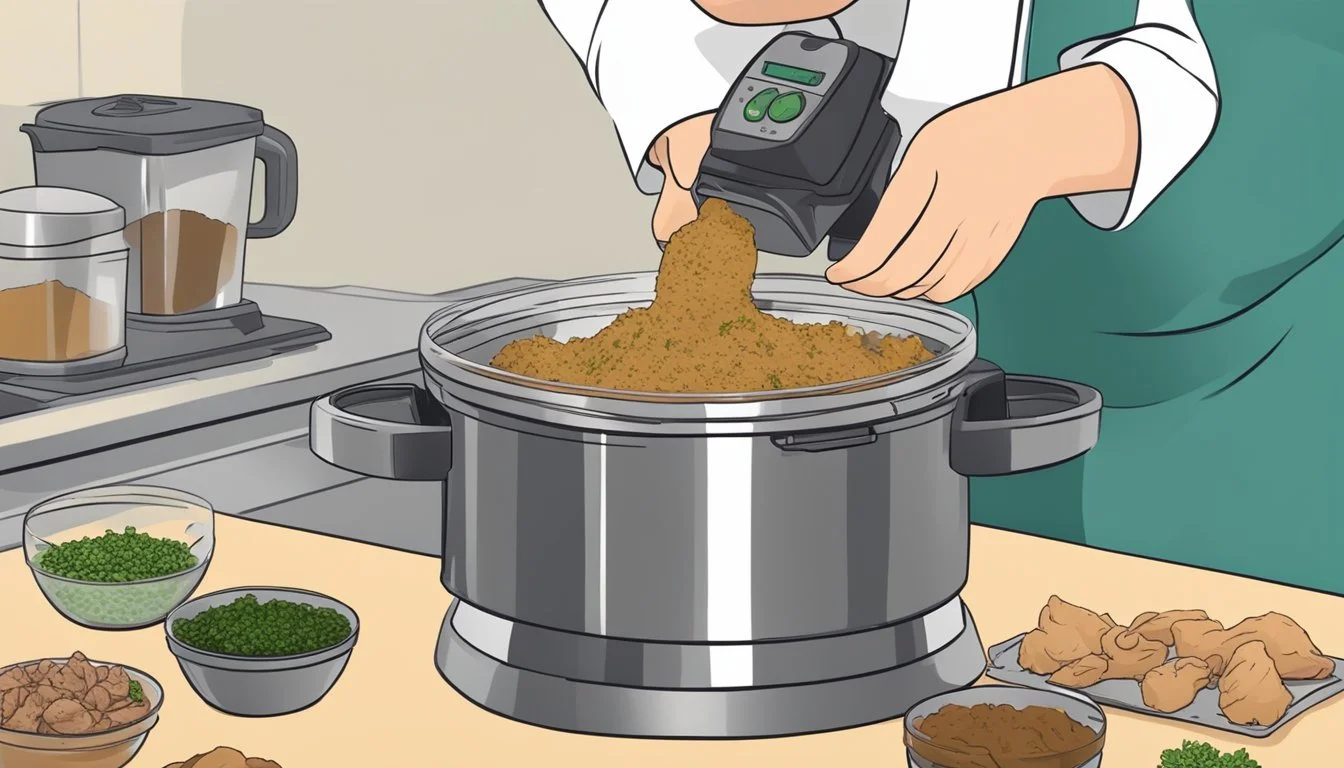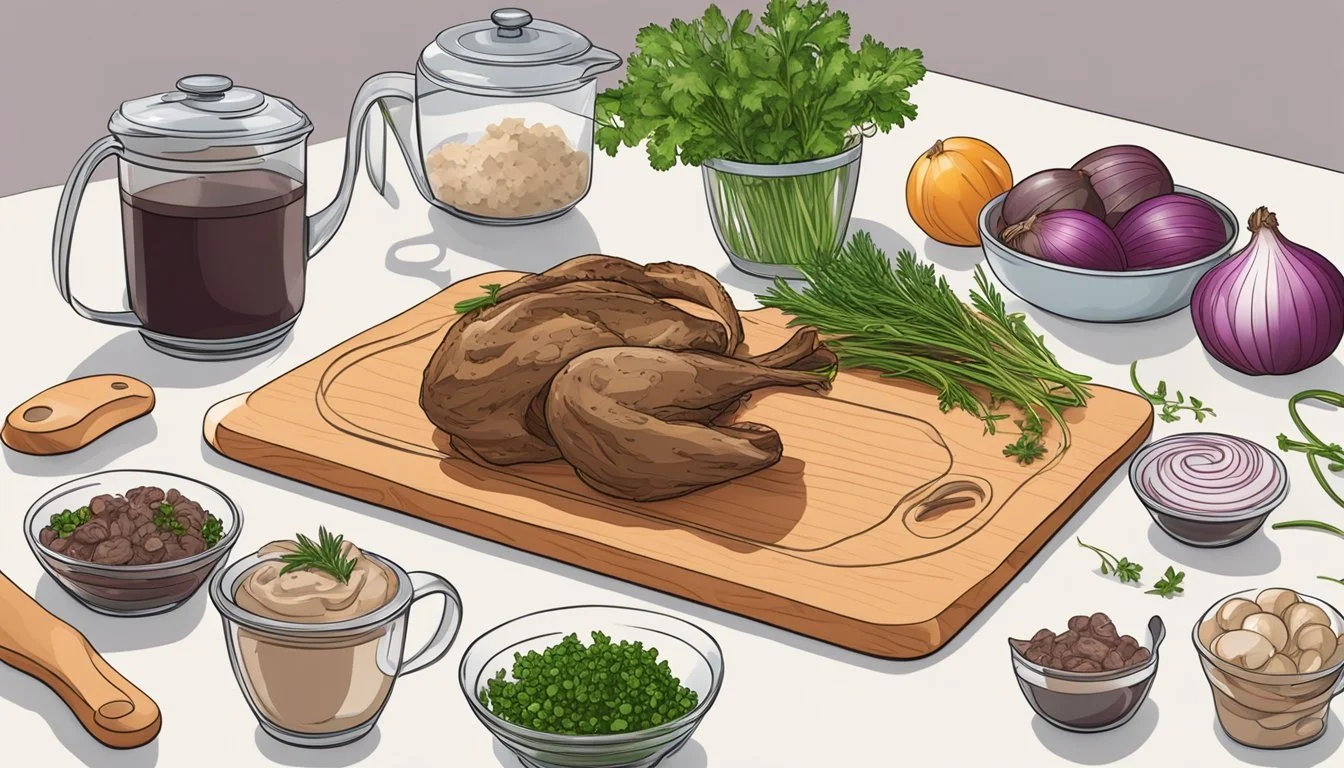How to Make Flavorful Chicken Liver Pâté from Scratch
A Step-by-Step Guide
Chicken liver pâté is a classic appetizer that stands out for its rich, savory flavors and smooth texture. This delicacy has graced culinary traditions across the globe, embodying a perfect blend of rustic charm and elegance. Making chicken liver pâté from scratch allows the cook to have full control over the quality and intensity of flavor, ensuring that the finished product is fresh and tailored to personal taste preferences.
The process of creating chicken liver pâté involves a careful selection of ingredients and a series of cooking techniques that are simple yet precise. Chicken livers, the main component, are known for their distinct taste and high nutrient content, making the pâté not only delicious but also nutritious. By incorporating ingredients such as butter, shallots, and a selection of herbs and spices, the pâté develops layers of flavor that are both mellow and profound.
Understanding the balance of flavors is crucial in crafting a memorable chicken liver pâté. The recipe combines the livers with complementary elements to enhance the natural taste while achieving a creamy consistency. The cooking process, which typically involves sautéing to brown the livers followed by simmering to ensure they are cooked through yet tender, is key to achieving the perfect texture for blending into a smooth, spreadable pâté.
Essential Ingredients
To craft a rich and palatable Chicken Liver Pâté, selecting the right combination of ingredients is crucial. These elements bring unique flavors and textures to the pâté, ensuring a balance between richness and depth.
Proteins and Fats
The core component of any pâté is its protein; in this case, chicken livers. Fresh chicken livers should be cleaned of any connective tissues. Fats are equally important, with butter and chicken fat (or schmaltz) being the choice fats for a silky-smooth finish. Both elements contribute to the creamy texture and deep flavor profile of the pâté.
Proteins: Chicken Livers
Fats:
Butter
Chicken Fat (optional)
Aromatics and Seasonings
Chicken Liver Pâté is greatly enhanced by the layered flavors of aromatics and seasonings. Onions or shallots form the aromatic base, providing a subtle sweetness when sautéed. Garlic adds a pungent depth, while fresh thyme introduces a light, herbal note that complements the liver flavor. It's important to season generously with kosher salt and black pepper to accentuate the pâté's savory notes and provide balance to the richness.
Aromatics:
Onion or Shallot
Garlic
Seasonings:
Fresh Thyme
Kosher Salt
Black Pepper
These essential ingredients, when combined, lay the foundation for a Chicken Liver Pâté that is both flavorful and sumptuous, demonstrating a perfect fusion of tradition and taste.
Preparation Techniques
Creating a delectable chicken liver pâté hinges on meticulous preparation. The process involves careful cleaning of the livers, strategic seasoning during sautéing for flavor development, and blending to achieve a velvety consistency.
Cleaning and Prepping Livers
To begin, one must ensure the chicken livers are clean and free of any connective tissues. It's crucial to thaw the livers gently if they're frozen and rinse them under cold water. Carefully pat them dry, and with a sharp knife, trim any green spots and sinew. This step is essential for a smooth final texture.
Sautéing and Flavor Enhancement
The key to rich pâté is to sauté the livers with flavor-enhancing ingredients. Heat a knob of butter in a skillet over medium heat, and gently cook onions or shallots until they are translucent, adding garlic in the final minutes to avoid burning. Introduce herbs like thyme for aromatic depth. Place the livers into the pan once the base flavors are established. One should sauté the livers until browned but not overcooked, usually for about 2 minutes per side, and then add a splash of brandy or Madeira to deglaze the pan. It's important to simmer to reduce the liquid and concentrate the flavors.
Blending to Perfect Smoothness
After sautéing, transfer the mixture to a food processor or blender while still warm to ensure a smooth spread. For a rich and creamy texture, add butter in pieces along with any chosen cream or other fats. Blend the ingredients until they form a homogenous mixture, scraping down the sides as necessary to incorporate all components evenly. If the pâté is not perfectly smooth, one can pass it through a sieve for an extra luxurious texture.
Cooking Process
Creating a rich and flavorful Chicken Liver Pâté hinges on mastering the cooking technique to achieve that perfect creamy texture while infusing the liver with layers of taste from spirits and herbs.
Perfecting the Pâté Texture
For the silkiest texture, chicken livers must be carefully cleaned and then sautéed until just browned. They are typically cooked over medium heat and must not be overcooked to avoid a grainy pâté. The livers should be set aside to cool before blending.
To blend, the livers are processed with unsalted butter that's been softened to room temperature. Some recipes also include cream or milk to enrich the pâté. Here's the procedure:
Place the livers in a food processor.
Begin to blend and slowly add softened butter.
For added richness, incorporate a splash of heavy cream or milk, ensuring the mixture remains thick and spreadable.
Sifting the mixture through a fine-mesh sieve after blending can remove any remaining lumps, leaving a perfectly smooth, creamy texture.
Infusing with Spirits and Herbs
The depth of the Chicken Liver Pâté's flavor is enhanced by the infusion of spirits and a selection of herbs. Alcohol helps to cut through the richness of the liver and butter, bringing balance and sophistication to the dish. Here's how they’re commonly incorporated:
Cognac, brandy, or port is often used to deglaze the pan after cooking the livers. This process lifts the fond (browned bits) from the pan, incorporating it into the pâté for intensified flavor.
Herbs such as thyme, sage, and a bay leaf are added during the cooking process. The heat helps to release their essential oils, which permeate the livers, infusing them with aromatic notes.
Blend these components into the liver mixture before chilling the pâté to allow the flavors to meld beautifully.
Finalizing the Dish
Once the pâté mixture is smoothly blended, finishing touches are crucial for setting the texture and enhancing flavors. The process involves careful shaping and adequate chilling to ensure that the chicken liver pâté firms up properly before serving.
Shaping and Setting in Ramekins
To shape the pâté, one should transfer the smooth blend into clean ramekins or a terrine mold as preferred. They should smooth the top with a spatula or the back of a spoon to create an even surface. Covering each ramekin with plastic wrap directly touching the surface can prevent a skin from forming and protect the pâté’s delicate flavor.
Chill and Set Time
The ramekins must be placed in the refrigerator to chill. It is crucial that they remain undisturbed for several hours, preferably overnight, to allow the pâté to firm up. The ideal result is a chilled, firm pâté that holds its shape when unmolded but is still creamy and spreadable at room temperature.
Serving Recommendations
When presenting chicken liver pâté, one elevates the dish to an elegant appetizer by considering the right accompaniments and garnishes. The choice of pairings and presentation can make a significant difference in the overall enjoyment of the pâté.
Accompaniments and Pairings
Crackers and Bread: A variety of crackers or thinly sliced bread serves as a classic base. For a rustic feel, one may opt for:
Whole grain crackers
Baguette slices
Sourdough
Toast and Crostini: For a crunchier texture, toast or crostini make excellent platforms. These can be made by:
Lightly toasting slices of French bread
Drizzling with olive oil before baking for extra flavor
Charcuterie Board: Chicken liver pâté fits seamlessly into a charcuterie (What wine goes well with charcuterie?) board. A good board might include:
Cured meats (What wine goes well with cured meats?) like prosciutto or salami
Fresh fruits
Garnish and Presentation
Garnish: The choice of garnish not only adds flavor but also visual appeal. A chef might use:
A sprinkle of coarse sea salt
Fresh herbs like parsley or chives
Elegant Display: Presenting the pâté should be done with attention to aesthetics. One can:
Use a small spreader for easy application
Serve on a marble or wooden board for a sophisticated touch
By thoughtfully selecting accompaniments and considering its presentation, one can serve chicken liver pâté that is both flavorful and visually appealing.
Nutritional Information and Dietary Considerations
Chicken liver pâté is a nutrient-dense food, providing a range of essential vitamins and minerals. It's particularly high in protein, and a good source of iron and vitamin A, which are crucial for maintaining healthy vision, immune function, and skin.
In terms of macronutrients, chicken liver is low in carbohydrates and fiber, making it suitable for low-carb diets. However, it's important to note that it is also high in cholesterol and saturated fat. For those watching their cholesterol intake, it's best to consume this in moderation.
The table below outlines the nutritional content per serving:
Nutrient Amount Calories 200 kcal Protein 7g Saturated Fat 2g Unsaturated Fat 1g Sodium 70mg Cholesterol 150mg Iron 6mg Vitamin C 0mg Calcium 1% Potassium 5% Carbohydrates <1g Fiber 0g Sugar 0g Vitamin A 50%
For individuals with dietary restrictions, chicken liver pâté can be prepared dairy-free by omitting butter and using alternatives like olive oil. It’s naturally low in sugar, but when making the pâté at home, one must ensure that no additional sweeteners are used, which can alter the nutritional profile.
Despite the high nutrient content, one should be aware of the saturated fat content in any accompanying ingredients such as butter or cream, which are often used in recipes for added creaminess and flavor. Developing a balance between flavor and health considerations is key in preparing a chicken liver pâté that aligns with one's dietary needs.
Storage and Make-Ahead Tips
When preparing chicken liver pâté in advance, one needs to address both refrigeration for the short term and freezing for extended preservation. It is important to ensure that the pâté maintains its flavor and texture during storage. This section outlines the optimal methods for storing your homemade pâté.
Short-Term Fridge Storage
The freshly made pâté should be transferred to an airtight container to prevent it from absorbing other flavors and aromas from the refrigerator. Chicken liver pâté can be safely stored in the refrigerator for up to five days. For best results, one should smooth the surface of the pâté and cover it with a layer of clarified butter or plastic wrap pressed directly onto the pâté to create a seal that prevents oxidation, which can alter flavor.
Container: Airtight, shallow container
Duration: Up to 5 days
Seal: Clarified butter or plastic wrap
Long-Term Freezing Options
Freezing can extend the pâté's shelf life, allowing one to enjoy it for several months. To freeze, portion the pâté into manageable sizes, wrap tightly in cling film or heavy-duty foil, then place inside a zipper-lock freezer bag. When defrosting, one should thaw the pâté overnight in the refrigerator and consume it within 24 hours for optimal taste. It is recommended to review the pâté after thawing to ensure it retains its desired quality. Do note that freezing may slightly alter the texture of the pâté but it is a good option to avoid waste and maintain yield.
Packaging: Cling film or heavy-duty foil, then freezer bag
Duration: Can be frozen for up to 3 months
Thawing: Overnight in the refrigerator; consume within 24 hours
Variations and Substitutions
Crafting chicken liver pâté allows for a wealth of variations and substitutions to match dietary requirements and taste preferences. This section details specific alternatives to traditional ingredients.
Alternative Ingredients
Liver Choices: While fresh chicken livers are standard for pâté, one may opt for duck liver for a richer flavor typical of French pâté. For a different taste, one could also use pork or beef liver.
Herbs: Where recipes call for dried thyme, it's simple to substitute an equal amount of any dried herb on hand, or alternatively, use three times the quantity of fresh thyme to capture a more robust flavor.
Alcohol Substitutes
Sherry: A common ingredient in pâté is sherry, which adds depth. For those avoiding alcohol, suitable non-alcoholic substitutes include apple cider vinegar or grape juice in equal parts for a similar acidic balance.
Gin: Some pâtés incorporate gin for its botanical notes. A non-alcoholic stand-in could be a small amount of diluted juniper berry syrup mixed with lemon juice, providing a comparable taste profile.
By considering these variations and substitutions, one ensures that their homemade pâté remains personal and adaptable to various preferences and needs.




